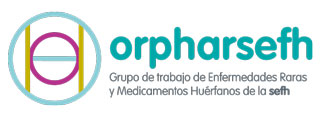One of the hottest topics in medicine is currently the treatment of the so-called rare diseases (RDs). However, although these diseases are associated with a low incidence, the number of people suffering from them are counted by the millions and their treatment constitutes a continuous challenge for healthcare systems, which affects professionals’ daily practice.
A rare disease is one whose prevalence is lower than 5 cases per 10,000 inhabitants. It has been estimated that RDs affect between 6 % and 8 % of Europeans, i.e., between 24 and 36 million people, 3 million of whom live in Spain.
RDs constitute a highly heterogeneous group of conditions which, however. present with a series of common characteristics:
- They are generally hereditary diseases which manifest themselves during childhood.
- They are chronic, often progressive, diseases associated with high morbidity and disability rates.
- Their etiologic, diagnostic, prognostic and therapeutic complexities make it necessary for them to be managed and followed up by a multidisciplinary team.
Most RDs have been scarcely studied. As a rule, research efforts have not only been few and far between, but they have also been divided across widely scattered, poorly-connected research teams. The little knowledge available, compounded with a lack of specific healthcare policies for RDs and their low prevalence, sometimes result in delays in diagnosis or even in the absence thereof, which negatively impacts the adoption of preventive or therapeutic measures.
Orphan drugs (ODs) are the therapeutic basis for RDs. Regulation (EC) No. 141/2000 of the European Parliament and of the Council of 16 December 1999 on orphan medicinal products defines them as drugs intended to:
- Establish a diagnosis, prevent or treat a disease that affects at most 5 persons per 10,000 inhabitants within the EU.
- Treat a severe disease or one that results in disabilities and which is unlikely to be marketed without incentives. It should be associated with significant benefits for people affected with the disease they are meant to treat.
ODs are drugs for which there is scarce scientific evidence as a result of:
- The reduced and heterogeneous group of patients included in clinical trials.
- An absence of valid therapeutic alternatives they can be compared with.
- Scarce follow-up / shot-term trials.
- Use of surrogate variables.
In addition, ODs are associated with a high economic impact given the high costs involved in investigating them, the difficulties in obtaining a satisfactory return on investment as a result of the small number of patients who have the disease, and the need for chronic use of the drugs.
For the reasons above, RDs and ODs constitute a challenge for health systems as they are associated with a high cost and unclear efficacy data, at least at the time they are registered. They currently account for over 10% of hospitals’ pharmaceutical bill, and this percentage is likely to increase going forward.
It is therefore necessary to gain a deeper understanding of the effectiveness of ODs in real-world clinical practice, which makes it necessary to establish strict criteria for the follow-up of treatment, as well as for its discontinuation if the expected clinical benefit is not achieved.
It has become indispensable to go from talking in terms of pharmaceutical expenditure to actually referring to the investment made in medicines, which obviously requires an understanding of the health outcomes obtained by such an investment. Hospital pharmacists are in an enviable position to lead this change, but for this they must all come together as a cohesive group to improve the management of knowledge in the area of ODs.




